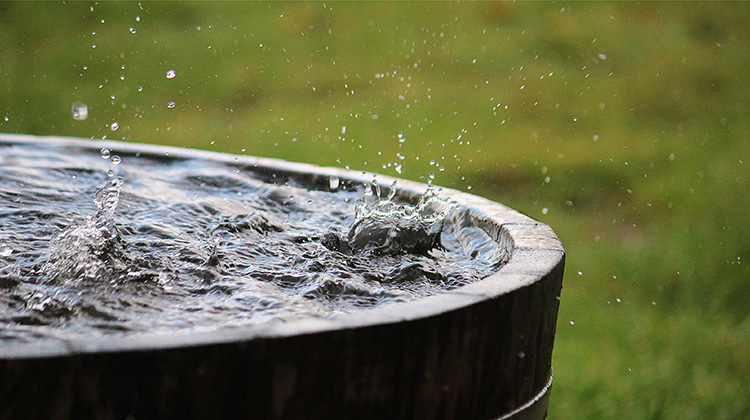Top tips to help save water
in your garden
Looking for new ways to make your green space even greener? Read our guide for helpful tips on how to save water and use it more efficiently around the garden.

1. Water your garden in the morning
It may be tempting to water your plants in the midday sun, but your flowers, trees and shrubs benefit much more from being fed in the morning. Your watering efforts are more likely to evaporate away when the sun is at its hottest, while in the evenings domestic water use tends to peak. Also, with less sun to absorb moisture at the end of the day, fungi and bacteria can grow and harm your plants. It’s also a good idea to avoid watering your garden where possible. It may sound obvious but keep an eye on the weather forecast to avoid unnecessary watering just before a downpour.
2. Plant flowers that need less water
Replace your thirstier plants with drought-proof options. These hardier plants will reduce your reliance on water and mean you can spend more time on other jobs in your garden. Lavender, sunflowers and Judas trees are popular plants that don’t require as much water to grow but your options don’t stop there. Look out for conifers, palms, shrubs and climbers with fine hairs on the leaves and stems to retain moisture and grey-green leaves to reflect the sun’s harshest rays.
|
3. Swap your hose for a watering can
If you want to water plants more carefully, pack away your hose and pick up your watering can. It may take longer to tend to your garden, but the old-fashioned method is more precise so you can water the areas of your soil you want to, and limit weed growth in the process. Watering cans also help to control the flow of water to your plants, which is particularly useful when feeding containers where water tends to run out of the bottom.
4. Show your soil some love
Improving the quality of your soil will help to feed your plants more efficiently. You can start by adding compost to improve the soil structure and increase moisture retention. Mulch, a loose covering made of wood chippings, conifer bark or other materials, is also useful. Cover the base of your plants with mulch during dry spells to reduce the exposed surface area of soil and minimise evaporation. Finally, water-retaining granules are a great way to maximise the use of water. Hanging baskets’ and containers’ best friends swell in size to hold on to water for longer, and they can be added to compost too.
5. Collect rainwater and greywater
Rather than turning on a tap, try collecting rainwater in a barrel or a butt. There are plenty of places around the home where you can collect water too. Bath and shower water is usually safe to use on plants as long as it doesn’t contain any bleach, disinfectants or strong cleaning products. Perhaps the most interesting of all ‘greywater’, or relatively clean wastewater, comes from washing fruit and veg and even from boiling pasta. Simply collect the excess and decide where’s best to use it later.

|


